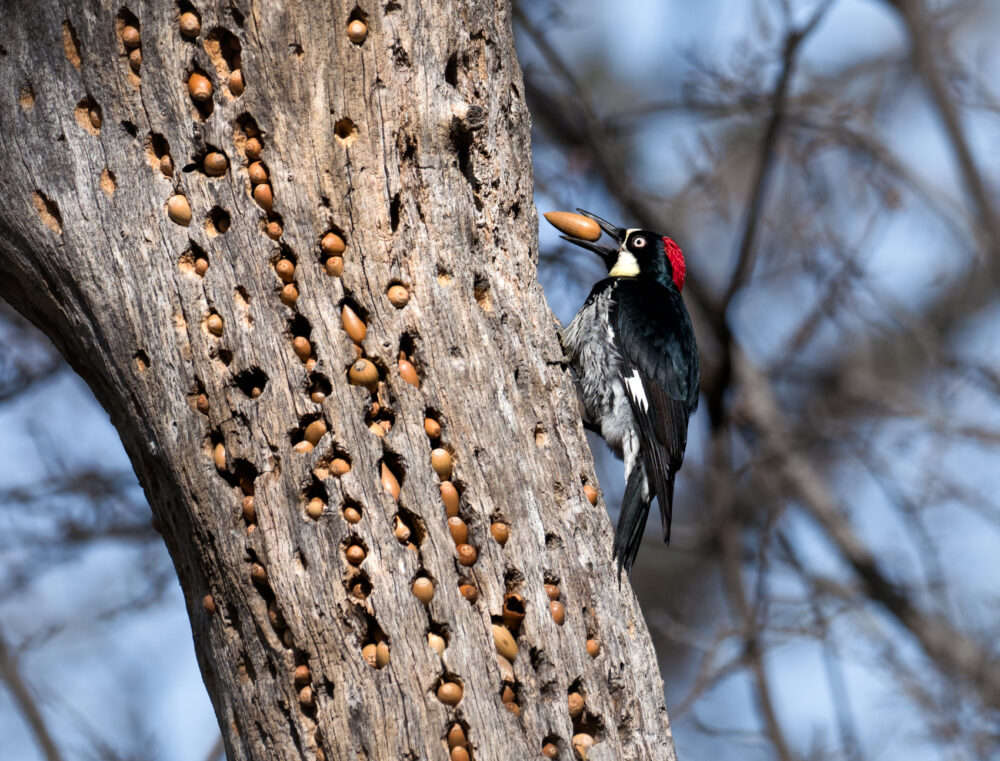We have much more to do and your continued support is needed now more than ever.
Why We Shouldn’t Have Lawns

Look around almost any neighborhood in the United States and you’re likely to see acres and acres of turf grass. How we got to this point of ‘lawn-superiority’ is the result of a deep and troubling history that we explored in our first blog of this lawn series, but where we go from here is just as important.
While lawns might be the American standard, that doesn’t mean they are the best choice for wildlife—or even for people.
The Cost of Lawns (Literally and Figuratively)
The American obsession with having not just a lawn, but one that is ‘perfect’ has enormous costs associated with it. It was estimated that in 2002 the turfgrass industry generated a total revenue of 57.9 billion dollars! This is a result of many homeowners spending hundreds to thousands of dollars on lawncare each year, including purchasing seed or sod, mowing or hiring a lawncare service, and purchasing fertilizers and pesticides. Even just watering a lawn can cause the bills to rack up as many standard lawns use about the same amount of water as 800 showers each year!
While the monetary and resource costs of lawns are enough to make most people balk, their metaphorical costs to us are perhaps even more notable. Lawns have huge impacts on our native wildlife, the environment, and even our own health.

Lawns Limit Biodiversity
Over 83% of land in the United States is privately owned. This means that every bit of care, whether on a small plot or a vast estate, plays a huge role in the fate of wildlife in this country.
Wildlife need a resilient habitat in order to survive, and these resilient habitats are made up of not just one species, but thousands, all interacting in a complex food web. The heart of this food web—plants—are particularly important. Unfortunately, most yards don’t feature a diversity of plant species at all, relying heavily on turf grass, a non-native plant that provides very little in terms of food or even shelter to local wildlife.
When it comes to supporting wildlife like birds, bees, and butterflies, planting native is key since many of these animals rely heavily on native plant species as their food source. Many butterfly and moth caterpillars, for example, can only eat certain species of plants known as their “host plant” and cannot reach adulthood without it. Similarly, about 30% of native bees rely on specific native plants for which they are “pollen specialists”. It’s not just insects that are impacted when these native plants aren’t present though; 96% of terrestrial bird species rely on insects like caterpillars to feed their chicks during nesting season, meaning that fewer caterpillars will result in fewer birds. The types of plants you choose for your yard matter to wildlife.

Environmental Impacts
Lawns can have hugely detrimental impacts on local environments and on broader environmental crises. One of the biggest offenders are the lawn pesticides and fertilizers that are all-too-frequently applied to turfgrass. These chemicals kill off more than simply ’weeds’, which can themselves be beneficial native species. Pesticides often also harm or kill beneficial animals and even soil microbes, and they’re also well known for running off into local water systems where they wreak even more havoc.
Even lawns that avoid the use of these chemical applicants can have negative impacts on the environment. In areas prone to fires, lawns with their densely packed turf grasses can provide ample fuel for fires. By comparison, clumped patches of native drought- and fire-resistant plants are less likely to facilitate the spread of fire. Meanwhile, in areas prone to heavy rain or floods, turf grass’s incredibly shallow roots do little to trap the water, increasing the opportunity for flooding, erosion, and even water damage to your property. Many native plants species have incredibly deep root systems that better manage hard rains and even improve water quality by filtering the water before it enters local waterways!

The Toll on Our Health
According to the United States Fish and Wildlife Service, American homeowners use up to ten times more chemical pesticides per acre on their lawns than farmers use on crops. This massive amount of pesticide use is known to cause long term impacts on human health as it enters waterways, is absorbed by plants, and even drifts into the air. Several kinds of cancer have even been linked with exposure to lawn chemicals. These negative health effects are particularly acute for the homeowners and their children walking through and playing in the lawn.
Should We Have Lawns?
Given the negative impacts that turfgrass lawns have on wildlife, the environment, and human health, it’s no wonder that many are considering a new path forward. Replacing turfgrass lawn with native plant habitat can go far in creating positive changes to our neighborhoods and the wildlife that live there.
Stay tuned for the next part in this series, Grow Beyond No Mow May: Options for Reducing Lawn to learn about how we can take our lawns and turn them into ecologically beneficial and aesthetically pleasing landscapes.
Garden for Wildlife – Join the National Wildlife Federation’s Garden for Wildlife™ and Certified Wildlife Habitat® movement!





















